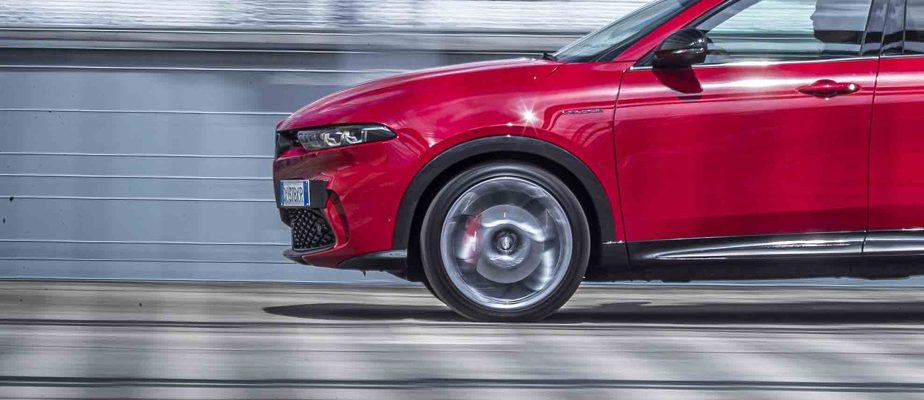Alfa Romeo Tonale and Dodge Hornet
Presented in its concept form at the 2019 Geneva Motor Show, the Alfa Romeo Tonale (pronounced Tonalé, like the Italians) is entering the Canadian market this spring. In Canada, this Italian utility will offer the same mechanical choices as the Hornet (one gasoline, the other hybrid). A good idea insofar as the electric fairy gives it more energy when accelerating and greater savings at the pump.
Don’t adjust your device, yes the Dodge Hornet has many similarities with the Alfa Romeo. They share the same assembly line in Italy. Here the similarities end. Dodge took care to adapt the Hornet to the tastes and desires of its customers, but also to the positioning of this vehicle on the market. Unlike the Tonale, the Hornet offers the choice between a gasoline engine (2 L) and another hybrid. The latter, even by the brand’s representatives, will be by far the most popular with consumers, especially in Quebec, where it will be eligible for government discounts (provincial and federal).
A hybrid at Mazda
Mazda is also raising its hood to a hybrid powertrain this season. The CX-90, a utility with three rows of seats, is the first beneficiary. The 2.5L four-cylinder engine is paired with an electric power unit. The latter is powered by a battery with a gross capacity of 17.8 kWh capable of ensuring a range of some 42 km, which should allow an average consumption of less than 9 L/100. A thruster that Mazda associates with an automatic transmission without a torque converter. With eight gears, this transmission was entirely designed by Mazda.

PHOTO PROVIDED BY MAZDA
Mazda CX-90 Hybrid
Two other engines (a 3.0L inline six-cylinder) will also be offered. One produces 280 hp, the other 340. Both are equipped with light hybridization. Indeed, a small electric motor powered here by a 48 V battery helps smooth the revs and will help contain the amount of fuel consumed. These motors recharge during the braking or deceleration phases to restore the stored energy to an alternator-starter during acceleration. In addition, this technology reduces CO2 emissions.
The other originality of this model lies in its architecture. Although this one, in Canada at least, will benefit from a four-wheel drive mode, this platform was initially designed to drive the rear wheels (propulsion). It also has the particularity of installing the mechanics in a longitudinal position in order to obtain an ideal distribution of the masses and to contain the movements of the body. All the ingredients necessary to preserve the cult – unfortunately endangered – of driving.
Redesigned Toyota Prius
The mother of all hybrids, Toyota’s Prius, gets a facelift this year. The order was given to the stylists to dress it this time with bodywork with more consensual shapes in order to broaden its audience. Beyond the exterior lines, we will especially remember that the Prime version (rechargeable hybrid) now benefits from an electric range of 70 km. This represents a 75% increase over the previous version.

PHOTO PROVIDED BY TOYOTA
Toyota Prius
The Prius Prime combines a four-cylinder gasoline engine (2.0L) with its fifth-generation hybrid device. The latter is powered by a 13.6 kWh battery. This two-headed engine produces more power, more torque. This results in faster acceleration since this Toyota now reaches 100 km/h in 6.8 s. A gain of some 3 s compared to the previous generation model.
As promised a little over a year ago, Toyota is adding a classic hybrid version (read that it charges itself) to the Corolla Cross. The latter consumes 5.6 L/100 km, according to tests conducted by Natural Resources Canada (NRCan). For comparison purposes, remember that the gasoline version of this model has an average fuel consumption of 7.3 L/100 km. Just like the Prius Prime, the Corolla Cross appends its gasoline engine to a hybrid engine of 5e generation. The battery, which is both more compact and lighter, is located under the rear seats so as not to impede the volume of the boot.
The expertise acquired by Toyota in the field of hybrid technology does not only benefit him. It also shares it with other builders. Today, Subaru and more recently Mazda benefit from technology transfers from Toyota. It has already made some 24,000 patents free of rights (excluding batteries, however) with, as a result, a (paying) proposal for technological assistance.
BMW XM
Even if it is committed to electrifying its range, the Bavarian Motor Werk (BMW) does not give up internal combustion engines. The XM proves it by pairing the turbocharged 4.4L V8 with an electric power unit whose combined output totals 644 hp and 590 lb-ft of torque in its standard trim level.
A more powerful version called Label Red promises even more (748 hp and 738 lb-ft of torque) in the fall. This model designed by M, the group’s sports subsidiary, stands out by adopting not only the group’s latest technological advances, but also all the knowledge acquired in half a century of competition.
